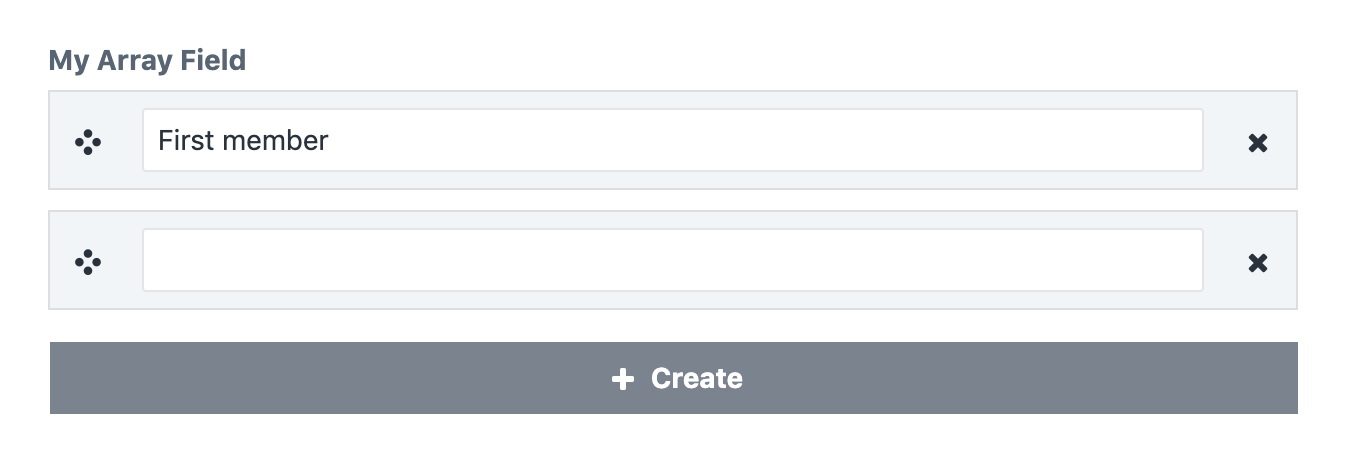Array field
The array field allows editors to create a sequence of values. All members
of an array are of the same member field type defined by the member
attribute. A simple array field definition looks like this:
myArrayField:
type: array
member:
type: text
This field definition creates the following input in the control panel:

The array field is most commonly used with a member of type instance. We have
a shortcut for specifying arrays of instances. See instances field.
You don't need an array field to store multiple references. The reference field is capable of holding multiple references by itself. See reference field.
Options
| Property | Description |
|---|---|
| group | Starts a new field group. |
| instructions | Additional instructions for this field in the control panel. Will be shown beneath the field label. |
| label | The primary `label` of the input field in the control panel. When omitted, a label will be generated from the name of the field. |
| limit | The maximum number of allowed items in the array. |
| member | Required. The field definition each item in the array will use. |
| rules | The validation rules of the field. |
| width | The width of the field in the control panel. |
limit
The maximum number of allowed items in the array. Once the limit is reached, the create button will disappear and the user can no longer drop new items into the field.
myArrayField:
type: array
limit: 3
member:
type: text
member
Declares the field each item in the array will use. All available fields
except the array field itself can be used. You cannot specify a name
for array member fields.
myArrayField:
type: array
member:
type: text
Templating
The array field exposes an instance of lenz\contentfield\models\values\ArrayValue
to templates.
Array access
The class ArrayValue implements both the ArrayAccess and the Countable interface.
You can therefore access individual items directly using the array access syntax and
check the length of the array using the length filter.
{% if myArrayField|length > 0 %}
<p>{{ myArrayField[0] }}</p>
{% endif %}
{% for %}
The class ArrayValue implements the IteratorAggregate interface. You can therefore loop
through array values using the default twig for tag.
label: Array field example
fields:
myArrayField:
type: array
member:
type: text
---
<ul>
{% for item in myArrayField %}
<li>{{ item }}</li>
{% endfor %}
</ul>
getFirst() / first
Retrieves the first visible value of the array.
{% if myArrayField.first %}
<p>First value: {{ myArrayField.first }}</p>
{% endif %}
getValues() / values
Returns a native PHP array containing the field values.
{% set nativeArray = myArrayField.values %}
hasValue() / isEmpty()
Checks whether the array contains any values.
{% if myArrayField.hasValue %}
...
{% endif %}